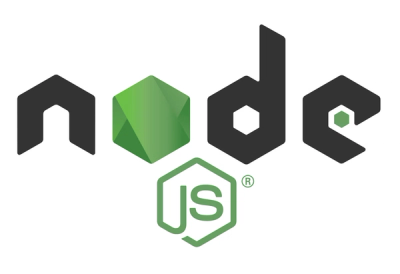
Security News
Django Joins curl in Pushing Back on AI Slop Security Reports
Django has updated its security policies to reject AI-generated vulnerability reports that include fabricated or unverifiable content.
http-server
Advanced tools
The http-server npm package is a simple, zero-configuration command-line HTTP server. It is powerful enough for production usage, but it's simple and hackable enough to be used for testing, local development, and learning.
Serving static files
This command serves the current directory at localhost:8080. It can be used to view static websites or any static files.
http-server -p 8080Customizable port
This command serves the current directory on a specified port, in this case, port 3000.
http-server -p 3000Specify the directory to serve
This command serves the specified directory instead of the current directory.
http-server /path/to/directoryHTTPS support
This command serves the current directory over HTTPS using the specified certificate and key files.
http-server --ssl --cert path/to/cert.pem --key path/to/key.pemEnable CORS
This command serves files with CORS enabled, allowing resources to be requested from another domain.
http-server -c-1 --corsSimilar to http-server, serve is a static file serving and directory listing package. It is also simple to use but comes with a few more features like clean URLs and single-page application (SPA) support.
Lite-server is a lightweight development only node server that serves a web app, opens it in the browser, and refreshes when html or javascript files change. It is built on top of BrowserSync and is more tailored towards serving SPAs.
Express is a minimal and flexible Node.js web application framework that provides a robust set of features for web and mobile applications. Unlike http-server, Express requires more setup but is much more powerful and extensible.
http-server is a simple, zero-configuration command-line http server. It is powerful enough for production usage, but it's simple and hackable enough to be used for testing, local development, and learning.

npmnpm install --global http-server
This will install http-server globally so that it may be run from the command line anywhere.
brew install http-server
Using npx you can run the script without installing it first:
npx http-server [path] [options]
npm package:npm install http-server
http-server [path] [options]
[path] defaults to ./public if the folder exists, and ./ otherwise.
Now you can visit http://localhost:8080 to view your server
Note: Caching is on by default. Add -c-1 as an option to disable caching.
-p or --port Port to use (defaults to 8080). Use -p 0 to look for an open port, starting at 8080. It will also read from process.env.PORT.
-a Address to use (defaults to 0.0.0.0)
-d Show directory listings (defaults to true)
-i Display autoIndex (defaults to true)
-g or --gzip When enabled (defaults to false) it will serve ./public/some-file.js.gz in place of ./public/some-file.js when a gzipped version of the file exists and the request accepts gzip encoding. If brotli is also enabled, it will try to serve brotli first.
-b or --brotli When enabled (defaults to false) it will serve ./public/some-file.js.br in place of ./public/some-file.js when a brotli compressed version of the file exists and the request accepts br encoding. If gzip is also enabled, it will try to serve brotli first.
-e or --ext Default file extension if none supplied (defaults to html)
-s or --silent Suppress log messages from output
--cors Enable CORS via the Access-Control-Allow-Origin header
-o [path] Open browser window after starting the server. Optionally provide a URL path to open. e.g.: -o /other/dir/
-c Set cache time (in seconds) for cache-control max-age header, e.g. -c10 for 10 seconds (defaults to 3600). To disable caching, use -c-1.
-U or --utc Use UTC time format in log messages.
--log-ip Enable logging of the client's IP address (default: false).
-P or --proxy Proxies all requests which can't be resolved locally to the given url. e.g.: -P http://someurl.com
--username Username for basic authentication [none]
--password Password for basic authentication [none]
-S or --ssl Enable https.
-C or --cert Path to ssl cert file (default: cert.pem).
-K or --key Path to ssl key file (default: key.pem).
-r or --robots Provide a /robots.txt (whose content defaults to User-agent: *\nDisallow: /)
--no-dotfiles Do not show dotfiles
--mimetypes Path to a .types file for custom mimetype definition
-h or --help Print this list and exit.
-v or --version Print the version and exit.
index.html will be served as the default file to any directory requests.404.html will be served if a file is not found. This can be used for Single-Page App (SPA) hosting to serve the entry page.To implement a catch-all redirect, use the index page itself as the proxy with:
http-server --proxy http://localhost:8080?
Note the ? at the end of the proxy URL. Thanks to @houston3 for this clever hack!
First, you need to make sure that openssl is installed correctly, and you have key.pem and cert.pem files. You can generate them using this command:
openssl req -newkey rsa:2048 -new -nodes -x509 -days 3650 -keyout key.pem -out cert.pem
You will be prompted with a few questions after entering the command. Use 127.0.0.1 as value for Common name if you want to be able to install the certificate in your OS's root certificate store or browser so that it is trusted.
This generates a cert-key pair and it will be valid for 3650 days (about 10 years).
Then you need to run the server with -S for enabling SSL and -C for your certificate file.
http-server -S -C cert.pem
This is what should be output if successful:
Starting up http-server, serving ./ through https
Available on:
https:127.0.0.1:8080
https:192.168.1.101:8080
https:192.168.1.104:8080
Hit CTRL-C to stop the server
Checkout this repository locally, then:
$ npm i
$ node bin/http-server
Now you can visit http://localhost:8080 to view your server
You should see the turtle image in the screenshot above hosted at that URL. See
the ./public folder for demo content.
FAQs
A simple zero-configuration command-line http server
The npm package http-server receives a total of 2,248,584 weekly downloads. As such, http-server popularity was classified as popular.
We found that http-server demonstrated a not healthy version release cadence and project activity because the last version was released a year ago. It has 3 open source maintainers collaborating on the project.
Did you know?

Socket for GitHub automatically highlights issues in each pull request and monitors the health of all your open source dependencies. Discover the contents of your packages and block harmful activity before you install or update your dependencies.

Security News
Django has updated its security policies to reject AI-generated vulnerability reports that include fabricated or unverifiable content.

Security News
ECMAScript 2025 introduces Iterator Helpers, Set methods, JSON modules, and more in its latest spec update approved by Ecma in June 2025.

Security News
A new Node.js homepage button linking to paid support for EOL versions has sparked a heated discussion among contributors and the wider community.